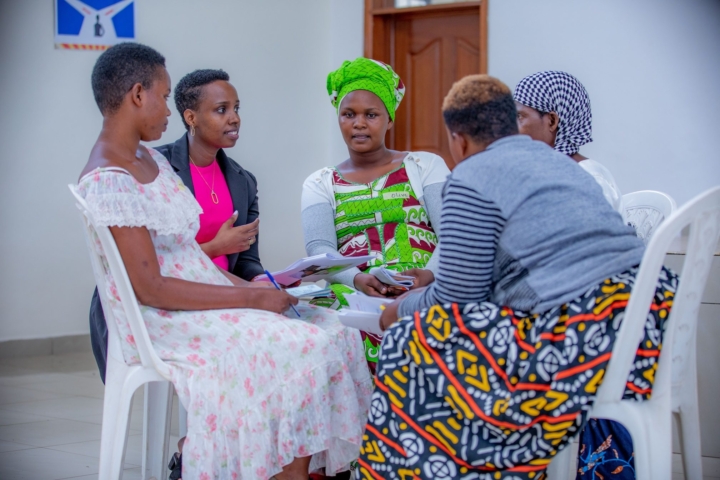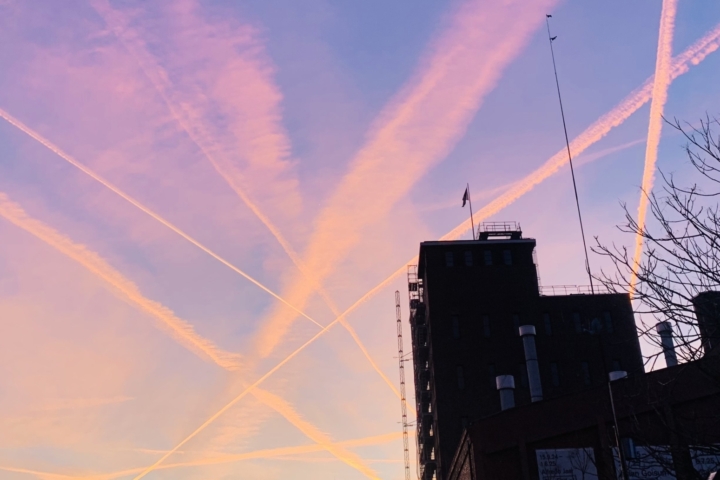2024 in Data: Stats that made us stop and think
Continuing our end-of-year tradition, we want to share our friends’ and partners’ insights. In past years, we’ve shared their inspirations and reading recommendations and this year, we’re diving into the numbers game! Read on for some surprising numbers and fascinating data.
Thank you to everyone who contributed! We hope you enjoy some restful holidays and kick off 2025 fresh and energized!
23 million
I recently attended the Mastercard Foundation partner convening in Kigali, where they shared their report, “Young Women in Africa: Agents of Economic Growth and Transformation by 2030.“ This report shows that young women in Africa can become important contributors to the continent’s economy, adding $287 billion to the economy, boosting GDP by 5%, and creating 23 million jobs if countries could follow Namibia’s example of accelerating young women’s contribution to GDP. This stood out to me as it emphasized why, at Resonate, we focus on women and girls and highlight the incredible value young women bring when empowered with the right skills and tools. Investing in young women is not just an opportunity for social change —it is a powerful driver of economic progress. Every time we fail to invest in their growth, we miss out on a key opportunity for both social and economic progress.
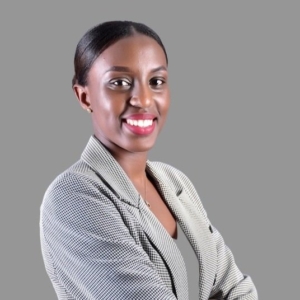
/ Claire Uwineza, Executive Director at Resonate
$94
$94 to treat one child with acute malnutrition. At Taimaka, we have been hard at work iteratively designing and testing improved approaches to malnutrition treatment. We were excited to see that work pay off: our reimagined model has treated more than 9,000 children for a unit cost of $94 per patient with severe acute malnutrition (SAM), a 60% reduction from existing methods (Reliefweb, 2024). This is an important inflection point for us as we focus on growing our program to reach many more children.
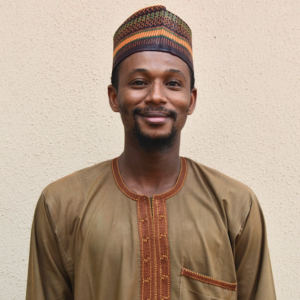

/ Dr. Abubakar Umar and Justin Graham, Co-Founders at Taimaka
24%
The rate of teenage pregnancy in Uganda stands at 24% (Ministry of Health, 2024). That’s nearly one in every four teenage girls—a statistic that paints a vivid and distressing picture. Imagine sitting in a classroom where almost every row has a young girl navigating the weight of both her studies and impending motherhood. It’s a harsh reminder that we are falling short in safeguarding their futures.
As someone working in sexual and reproductive health, this figure isn’t just a number; it’s a call to action. It highlights the urgent need to raise awareness and increase access to sexual and reproductive health and rights services. It underscores the urgent need to close gaps in education, ensure access to contraception, and foster supportive systems. This statistic doesn’t just make me pause— it’s a catalyst for action. It strengthens my resolve to advocate for a world where girls can pursue their education, dreams, and childhoods without compromise.

/ Safaa Garelnabi, Co-Founder and CEO at Hope Springs Health Foundation Uganda
50%
Since the year 2000, the average years of schooling have increased by 50% (from four to six) in Sub-Saharan Africa (UNDP, 2024). At the same time, nearly half of teenagers globally cannot read with comprehension (UNESCO, 2024).
Six years of schooling is, of course, still far too little, but it’s impressive that it has increased by 50% in just this century. The recognition that access to and quality of education are not synonymous is not new, but always worthwhile to remember.
I’m often struck by perceptions and opinions that are extreme or polarized, leaving little room for nuances (it’s either love or hate, enemy or friend, doom or endless optimism). So I wanted to include a stat that is more balanced: optimistic yet realistic, acknowledging progress while being mindful of remaining challenges.
The fact that the stat itself – 50% – is also numerically balanced was more of a coincidence, but it feels fitting :)
In addition to my stat, I sneak in a reading recommendation. I am sure many of you already know OWID, but for those who don’t, I highly recommend their Daily Data Insights. I love stumbling over stats in that category – some surprising, some confirming, and others on topics I know little about but that make me think.
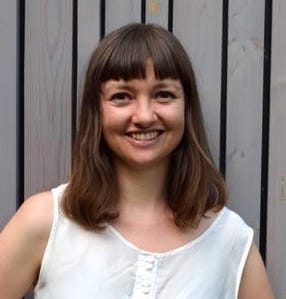
/ Lea Buck, Managing Director at Azurit Foundation
90%
This year I had the greatest revelation about light being a powerful tool for justice. After two years of working with technology to extend legal services to rural and unconnected communities through the BarefootLaw Boxes, we noticed a troubling trend—an increase in assaults, especially against women occurring on market days (every Thursday), often taking place in the dark. Compounding this problem was the unreliable power at the local police station, which meant some had to wait until the next day to report incidents, which weakened evidence.
With partners, we launched the first-ever Justice Microgrid to light up not only the BarefootLaw Box but also the local justice ecosystem including the police station, the community court, town council offices, the market area, and the boreholes- one of the places where women were most vulnerable.
In a recent interview with the police of Bala Town Council (where the Microgrid is located), I was amazed to learn that the coming of solar light and power together with already existing BarefootLaw interventions had led to a ninety per cent (90%) reduction in cases reported around domestic violence to local community court. I had known that light would contribute to this change, but I didn’t think it would be this much and this fast.
All these efforts support BarefootLaw’s mandate to create peaceful communities where people can thrive.
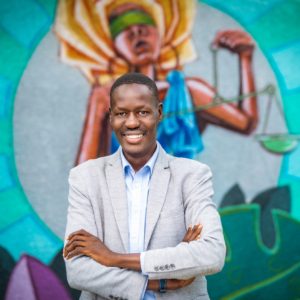
/ Gerald Abila, Founder and CEO at BarefootLaw
150
Of the total 147,500 recorded species, nearly 41,500 are categorized as threatened. This marks the largest extinction event since the end of the dinosaur era 65 million years ago. Currently, up to 150 plant and animal species are going extinct – every day.
Humans are devastating habitats, with agriculture alone accounting for 90% of global deforestation and 70% of freshwater usage. On top of that, unsustainable agriculture contributes significantly to greenhouse gas emissions, exacerbating the climate crisis and creating an additional feedback loop of ecological destruction (WWF).
Africa’s flora and fauna make up about one quarter of the planet’s biodiversity (IFAW, 2024) and over 6,400 animals and 3,100 plants on the continent are at risk of extinction (UNEP, 2016). This threatens millions of livelihoods, increases food insecurity, conflicts over land, and the transmission of zoonotic diseases (Africa Center, 2022).

/ Anton Hieber, Advisory Board Azurit Foundation
19%
Only 19% of Malawian children between 7 and 14 have foundational reading skills (UNICEF, 2024). In other words, more than 80% of Malawian children aged 7 to 14 lack foundational reading skills. With over 4 million learners enrolled in primary schools, we should be very concerned. We need to do more to address the learning crisis and literacy challenge in Malawi if we are going to change the narrative for the next generation.

/ Patience Khembo, Founder and Executive Director at Ladder to Learning
2x
Expat founders of social enterprises in sub-Saharan Africa raise twice as much capital in their first two years compared to local founders. I think this statistic illustrates an often ignored root barrier. While there are a lot of foundations and impact investors who wish they could invest in more locally-led organizations, in practice an uneven amount of capital still goes to expat led enterprises. On average, the world starves locally-led organizations in their early days, which is why on average they fail to grow big enough to compete for larger investments and philanthropic capital at later stages.
My organization D-Prize calculated this figure by using raw data from Echoing Green’s State of Social Entrepreneurship 2020 report. They published their applicant pool data from 2016-2020, which gaves us a sample size of 1,400 social venture organizations that were applying for early-stage funding.

/ Nick Fusso, Co-founder at D-Prize
500
The rise of gender-based violence (GBV) and femicide in Kenya demands urgent attention. One sad stat that made me stop and think is that in Kenya between 2016 and 2023, over 500 women were murdered by their intimate partners (UN Women, 2024), and in January 2024 alone, 14 more women were killed (Equal Measures, 2024). These tragic statistics, combined with the reality that nearly half of Kenyan women experience GBV in their lifetime, underscore a pervasive and devastating issue. Most cases remain underreported or ignored, perpetuating a cycle of silence and inaction. While economic empowerment is a critical tool for change, true progress must also address mental health, emotional well-being, and conflict resolution.
To end GBV, we must engage men as equal partners in this fight. Patriarchal norms often condition men to suppress emotions and equate vulnerability with weakness, fostering a culture of unresolved conflict that can lead to violence. We can challenge these harmful norms by fostering inclusive conversations on mental health and positive communication and building healthier relationships. This is not just a women’s issue but a societal challenge that demands collective action. Together, we can create a world where everyone feels safe, valued, and empowered to live without fear.

/ Grace Ongong’a, Co-Founder and Executive Director at Asembo Skills for Hope
10,000
I recently read in this book that in 1960, only around 10,000 people in Mali were able to speak and write French. Out of a population of 4 to 5 million. Why the heck did the then Malian government hence chose to use French as the official language of instruction? The official answer is ‘modernity’, ‘administrative efficiency’. Because Malian (wider African) languages are said to be oral… but the truth is disturbing. Take Dogon writing. A system that comprises at least 11,616 signs; there are many other scripts in the region (such as the Bamana script one).
Why this denial of writing? Why is it that the hieroglyphs of the Mayans are considered writing, but not the Dogon and Bamana graphic systems, which are classified as ideograms? We recognize the Chinese script, with its thousands of characters. But not the Malian ones. This reminds me of the semiologist Simon Battestini who explains it perfectly in this book: it’s a “Western refusal to perceive writing and text in the African symbolic and literary landscape”. A refusal that is, well, not quite scientific… maybe colonial? Caveat: I just finished reading the book and I could not yet cross-check if that number of 10,000 is correct. The book was published in a collection co-lead by the French Ministry of Armies, so probably not the most neutral body on that topic.

/ Yanick Kemayou, Advisory Board Azurit Foundation
254%
I have been surprised by the inflation statistics in Nigeria: November’s inflation rate hit 34.60% with food prices soaring at a 117% price increase since October 2023 for tomatoes, 199% increase for Ofada Rice and a staggering 254% price increase for brown beans (NBS, 2024). The worst part is that it’s not getting better, I hope there is a turn around soon.

/ Josephine Nzerem, Advisory Board Azurit Foundation
10
10 out of the 18 countries that had more than 90% renewables in their electricity production in 2023 were African countries, more than half (Our World in Data, 2024)! Africa contributes only 2-3% to global greenhouse gas emissions (World Meteorological Organization, 2022) and simultaneously faces the most severe consequences: heat waves, extensive floods, tropical cyclones, prolonged droughts, just to name a few. The World Meteorological Organization (2024) writes that African countries are already losing 2–5 percent of GDP and diverting up to 9 percent of their budgets responding to climate extremes. Building the climate economy is a responsibility of the biggest emitters and an opportunity for African countries to be at the forefront of these developments, potentially less hindered by path dependencies & the influence of established fossil industries.

/ Noémie Bricard, Project Manager at Azurit Foundation
300%
While I saw many sobering stats this year, I want to share a positive stat that made me feel excited and motivated. A third-party assessment of our work in Kenya revealed that introducing our long-range drone could boost revenues for local drone companies providing agricultural mapping services in Kenya by an impressive 300%.
This excites me because I got sick and tired of seeing entrepreneurship projects in Africa that don’t create lasting change and, in some cases, leave people worse of.

/ Tendai Pasipanodya, Co-Founder at Drones Doing Good Alliance
photo credit header picture: Luca Bravo on Unsplash
